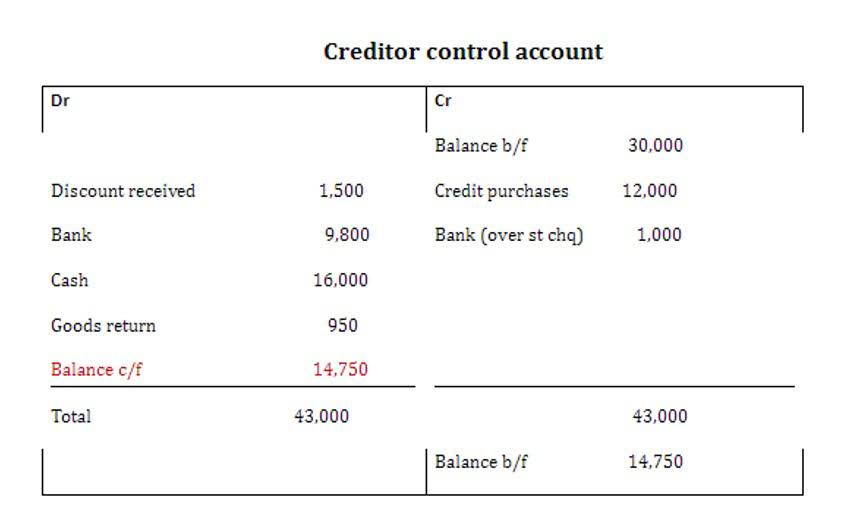
When a particular account becomes uncollectible and is written off, there is no impact on the income statement. The percentage-of-receivable approach satisfies requirements of the matching principle as well, even though it may not be as precise in terms of matching revenues and bad debt expenses as the percentage-of-sales approach. Aging schedule of accounts receivable is the detail of receivables in Bookkeeping vs. Accounting which the company arranges accounts by age, e.g. from 0 day past due to over 90 days past due. In this case, the company can calculate bad debt expenses by applying percentages to the totals in each category based on the past experience and current economic condition.

Calculate bad debt expense allowance method

The method is often used for forecasting the impact of sales growth on income statements and balance sheets. The amounts deemed by a company to be uncollectible are recorded in a contra-asset account called allowance for doubtful accounts. This account is subtracted from gross accounts receivable to arrive at net realizable value of accounts receivable on the balance sheet. There may be several methods to estimate how much of accounts receivable will eventually be uncollectible. Two of such methods are the percentage-of-sales approach and the percentage-of-receivables approach.

Different approaches to setting an advertising budget
- The “Affordable Method” of setting an advertising budget is particularly suitable for startups or businesses with limited financial resources.
- She estimates that approximately 2 percent of her credit sales may come back faulty.
- Likewise, the company may record bad debt expense at any time during the period.
- Calculate the bad debts expense to be recognized at the end of the period and the new balance of the allowance for doubtful debts account.
- The percentage of sales method may not account for external factors that can impact your marketing efforts.
Let’s use the example of a potter named Harry, whose revenue was $100k last year, and he expects sales to increase 50% next year. When used correctly, this can be a simple asset for assessing the success of your overall sales strategy. Easily calculate drop-off rates and learn how to increase conversion and close rates. Zero-Based Budgeting, while thorough, can be time-consuming and resource-intensive as it requires justifying every percentage of sales method aspect of the advertising spend from scratch each year. The break-even point is a major inflection point in every business and sales organization.

Marketing with HubSpot
- For instance, a company’s inventory might directly correlate with sales because as sales increase, the business would likely require more inventory.
- Each historical expense is converted into a percentage of net sales, and these percentages are then applied to the forecasted sales level in the budget period.
- While these numbers are only useful in the short term and the process needs repeating, the percentage of sales model allows businesses to make educated decisions about the direction their companies are headed.
- Let’s use the example of a potter named Harry, whose revenue was $100k last year, and he expects sales to increase 50% next year.
- Two of such methods are the percentage-of-sales approach and the percentage-of-receivables approach.
Suppose Panther Tees is a t-shirt retailer that sells t-shirts directly to consumers via its online platform. Since the cost of acquiring the products is increasing, the organization wants to determine whether it must increase the price of the t-shirts. Larger companies allow for a certain percentage of bad credit in their financial analysis, but many small businesses don’t, and it can lead to unrealistic projections and unforeseen loss. Liz’s final step is to use the percentages she calculated in step 3 to look at the balance forecasts under an assumption of $66,000 in sales. Liz looks through her records for the month and calculates her total sales at $60,000. It’s been a decent month and she’ll break even, but she wants to know what the following month might look like if sales increase by 10 percent.

This financial forecasting tool allows companies to evaluate their past sales accurately to project into the future easily. Based on the financial outlook, businesses can make necessary changes to increase profitability. This technique is popular among advertising companies owing to its straightforwardness and the ability to directly link advertising expenditures with revenue or sales.
- This concept is widely employed, especially in situations where a direct correlation between sales and the other company variables is apparent.
- An approach that estimates bad debts based on a percentage of credit sales, aligning expenses with related revenues.
- It is based on the assumption that most of the company’s balance sheet accounts vary directly with sales.
- Businesses can determine how much (approximately) they can earn or lose in all accounts by taking the revenue percentage relevant to every account and applying it to the forecast number.
- Based on past experience and its credit policy, the company estimate that 2% of credit sales which is $1,900 will be uncollectible.
The percentage of sales method allows you to forecast financial changes based on previous sales and spending accounts. A popular, efficient way bookkeeping to forecast sales is to employ something known as the percent of sales method. While some sales forecasts are so complicated and detailed that they make your head spin, this is a simple sales forecast that even the least numbers-oriented small business owners like me can use. Accounts receivable aging represents a schedule showing how long amounts comprising the total accounts receivable balance have been outstanding. Therefore, through this method, businesses can project future financials, enabling them to plan effectively, whether in budgeting, identifying potential financial difficulties, or making investment decisions.

